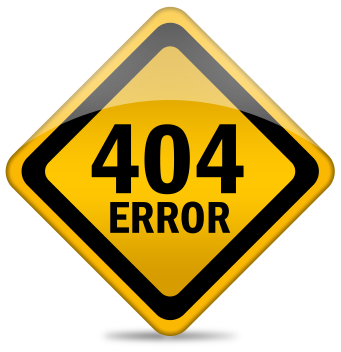404 Pages… lost, confused and sad.

Whatever the cause of the 404 error, it is a bad thing. A 404 error indicates someone has come to your website to find content and it isn't where she expected to see it. Your website has failed her.
So, what to do? Really, the goal is two fold. First, you want to prevent 404 messages wherever possible. Second, when a 404 page happens (you really can't help them sometimes) you want to help your user find what he or she is seeking.
Some tips on how to accomplish those goals.
- Create a custom error page - It turns out that designers actually love to design fun 404 pages. There are pages, upon pages, upon pages of lists of custom 404 pages that are unceasingly funny. I am totally on board with the idea of creating fun custom 404 pages. My caveat though is that you should make them useful as well as clever though. Don't just tell them they are lost, help them become found. For example, our 404 page provides access to search to hopefully get the visitor back on track. I like this one from Mozilla as well which provides a number of options for repairing the issue and getting the user back on track.
- Figure out where people are going awry. You can do this in one of two ways. You can check your server logs. I know the term server logs is a scary one for must of us non engineers, but I swear nothing here is too painful. Your server logs record the URLs that are entered when a user gets a 404 error. With that information, you can figure out if you have a persistent problem with certain content. Don't know how to check your server logs? Talk to the help desk at your web host. They will help you out. (Plus, once you have done this, you can walk around for hours afterward telling people you were checking your server logs. You will sound way smarter!) Or if you are on a WordPress, check below for some plugins that can help you out.
- Redirect - Once you know what is causing people to get lost (or perhaps even before you cause the problem in the first place, the best way to avoid the 404 problem is to provide redirects from the original link location to the new link location. See below for some tools to do that.
WordPress tools to help out
- 404 Notifier - Skip the server logs, this plugin alerts you to 404 errors by email or RSS.
- Custom 404 Error Page - Create a custom 404 page for your site
- Redirection - A quick way to redirect those old links to their new locations.
